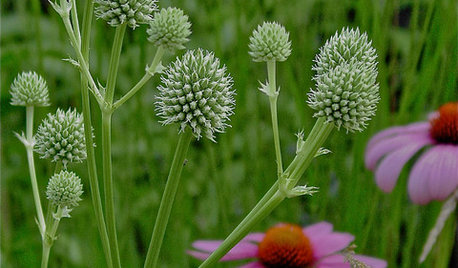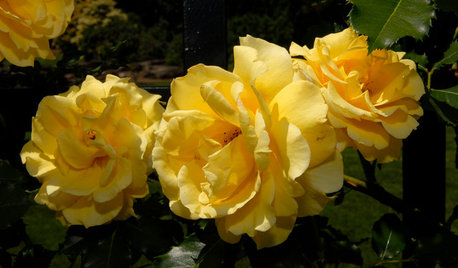Earwigs
janetpetiole
16 years ago
Related Stories

GARDENING GUIDESOrganic Matters: Thwart Insect Pests With Trap Crops
Add a few sacrificial plants to your garden to lure insects away from the harvest
Full Story
FARM YOUR YARDHow to Grow Vegetables in Containers
Get glorious vegetables and fruits on your patio with a pro’s guidance — including his personal recipe for potting mix
Full Story
MOST POPULARSummer Crops: How to Grow Sunflowers
Savor snack-tastic sunflower seeds once the radiant blooms have faded — if the birds have saved you any, that is
Full Story
GARDENING AND LANDSCAPINGPorch Life: Banish the Bugs
Don't let insects be the bane of your sweet tea and swing time. These screening and product ideas will help keep bugs at bay on the porch
Full Story
GARDENING GUIDESGreat Native Plant: Rattlesnake Master for Unique Interest
Serpents actually don’t give a hoot about this prairie wildflower, but insects do — and the foliage is a big draw too
Full Story
BUDGET DECORATINGDumpster Decorating: Furnishing Your Home With Repurposed Pieces
Whether you call them reclaimed or recycled, these furnishings honor our pocketbooks and our planet
Full Story
PORCHESGive Your Outdoor Rooms a Cozy Winter Makeover
If you live in a mild climate, enjoy days and evenings on your porch or patio with these tips for staying warm and comfortable
Full Story
CONTAINER GARDENS7 Deer-Resistant Flowers for Your Summer Containers
Grow these as protection for edibles or just for their colorful beauty — deer might not like them, but everyone else will
Full Story
GARDENING GUIDESLessons in the Rewards of Selfless Gardening
Let go of gardening for your own vision and watch the garden’s own true vision come forth
Full Story
GARDENING GUIDES5 Favorite Yellow Roses for a Joyful Garden
Make 'cheery' the name of your garden game when you order your roses sunny side up
Full Story





madisonkathy
justaguy2
Related Professionals
East Rancho Dominguez Landscape Architects & Landscape Designers · North New Hyde Park Landscape Architects & Landscape Designers · Amesbury Landscape Contractors · Flagstaff Landscape Contractors · Peachtree City Landscape Contractors · Sammamish Landscape Contractors · Seymour Landscape Contractors · Thonotosassa Landscape Contractors · Thornton Landscape Contractors · Wheat Ridge Landscape Contractors · Clearfield Landscape Contractors · Idaho Carpenters · Livingston Carpenters · Pearland Carpenters · Stratford CarpentersjanetpetioleOriginal Author
tsugajunkie z5 SE WI ♱
User
luvtosharedivs
riverminty
drcntyaah
tsugajunkie z5 SE WI ♱
vcole2010
vcole2010